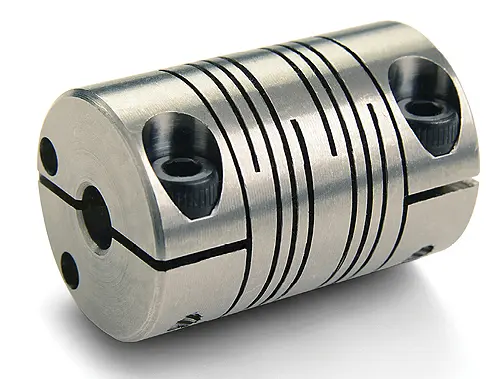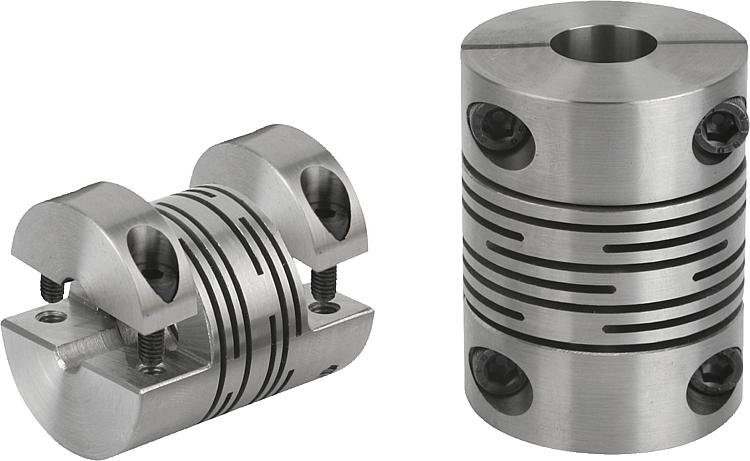“`html

Introduction to Beam Coupling for Ski Lifts
Beam couplings, also known as helical couplings, are a vital component in the operation of ski lifts. These mechanical devices are designed to connect two shafts while accommodating misalignment, transmitting torque, and allowing for some axial movement. In this introduction, we will explore the features, applications, and advantages of using beam couplings in ski lift systems.
Key Features of Beam Couplings
- High Flexibility: Beam couplings offer a high degree of flexibility, allowing for the accommodation of misalignments between connected shafts without imposing significant loads on the shafts or other components.
- Zero Backlash: These couplings are designed to operate with zero backlash, ensuring smooth and consistent power transmission, which is crucial for the smooth operation of ski lifts.
- Durability: Constructed from robust materials, beam couplings are built to withstand the harsh conditions and heavy usage typical in ski lift operations.
Advantages of Beam Coupling in Ski Lifts
- Improved Lift Performance: The flexibility and zero backlash of beam couplings contribute to smoother and more reliable ski lift operations, enhancing overall performance.
- Reduced Maintenance: Due to their durable construction and ability to accommodate misalignments, beam couplings require less maintenance, saving time and costs.
- Increased Safety: The reliability and consistent performance of beam couplings help ensure the safety of ski lift operations, a critical consideration for operators and users alike.
- Easy Installation: Beam couplings are designed for easy installation, reducing downtime during maintenance or upgrades of ski lift systems.
- Versatility: Available in various sizes and configurations, beam couplings can be tailored to meet the specific requirements of different ski lift models and designs.

How Beam Couplings Work
Beam couplings operate by transmitting torque through a helical cut pattern in the coupling body. This design allows for angular, parallel, and axial misalignments while maintaining a high torsional stiffness and torque capacity. The helical pattern compresses and expands to accommodate misalignments, ensuring smooth torque transmission and compensating for any positional inaccuracies between the connected shafts.
The material and design of the helical pattern are crucial for the performance of the coupling, providing the right balance between flexibility and strength. By adjusting the number of helical cuts and their depth, manufacturers can customize the coupling’s performance characteristics to suit specific applications, such as ski lifts.
In ski lift applications, where safety and reliability are paramount, the beam coupling’s ability to maintain a smooth and consistent transfer of power under varying conditions is a key advantage. This ensures that the ski lift operates smoothly, enhancing the comfort and safety of passengers.
Choosing the Right Beam Coupling
Selecting the appropriate beam coupling for ski lift applications involves considering several factors:
- Torque Capacity: The coupling must be able to transmit the required torque without failure or degradation of performance.
- Misalignment Tolerance: It should accommodate the expected misalignments in the ski lift system without imposing excessive loads on other components.
- Material: The coupling material should withstand the environmental conditions of ski lift operations, including low temperatures and potential exposure to moisture or chemicals.
- Size and Configuration: The coupling should fit within the available space and be compatible with the shaft sizes and configurations of the ski lift system.
- Maintenance Requirements: Consider couplings with lower maintenance needs to reduce downtime and operational costs.

Maintenance of Beam Coupling
Maintaining beam couplings in ski lift applications is crucial for ensuring the safety and reliability of the lift operations. Regular inspections should be conducted to check for signs of wear, misalignment, or damage to the coupling. Lubrication may not be necessary for certain types of beam couplings, but it’s important to follow the manufacturer’s recommendations. Any issues identified during inspections should be addressed promptly to prevent downtime or, more importantly, safety incidents. The importance of maintaining these couplings cannot be overstated, as they play a critical role in the smooth and safe operation of ski lifts.
About HZPT
HZPT, established in 2006, is a professional manufacturer and exporter specializing in the design, development, and production of couplings. With a dedicated design and R&D team with 16 years of experience, we customize products to meet the requirements of customers worldwide. Our comprehensive quality control system spans from raw materials to finished products, ensuring the highest quality standards. All our products are CE and TUV certified, underscoring our commitment to quality and safety.
At HZPT, our philosophy is “Customer satisfaction, our pursuit.” We are dedicated to providing the best service, highest product quality, and most competitive prices. Our main products include a wide range of couplings suitable for various industrial applications, ensuring we are the best choice for your needs. We look forward to cooperating with new customers around the world and establishing successful business relationships in the near future. Our reputation among major clients in Europe and America speaks volumes about our service and product quality. Choose HZPT for reliability and excellence in all your coupling needs.
“`
